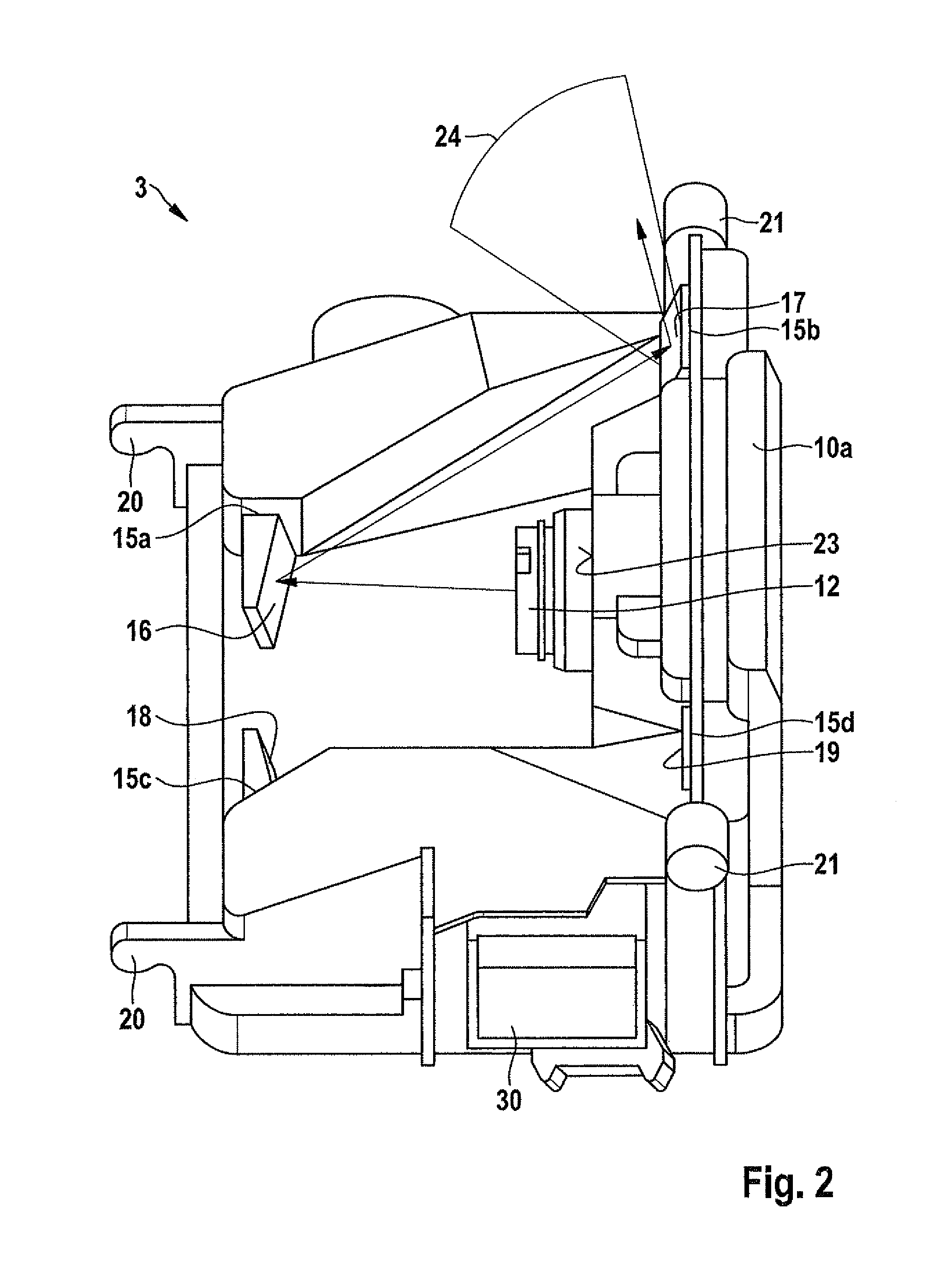Camera for a vehicle
a technology for vehicles and cameras, applied in closed circuit television systems, color television details, television systems, etc., can solve the problems of complex adjustment using additional adjustment devices, large integration pressure, and inability to adjust the camera housing in one step, and achieve the effect of relatively simple fastening of the upper shell to the lower shell for forming the entire camera housing
- Summary
- Abstract
- Description
- Claims
- Application Information
AI Technical Summary
Benefits of technology
Problems solved by technology
Method used
Image
Examples
Embodiment Construction
[0031]In a vehicle 1 (not shown in greater detail) having a windshield 2, a camera 3 is fastened to a camera mount 4 suggested here by dashed lines. Camera mount 4 is fastened to windshield 2, e.g., snapped into a mounting plate 8 cemented to inside 2a of windshield 2. Camera mount 4 may also be a part of a mirror mount of the rear view mirror.
[0032]Camera 3 has a camera housing 10, in or on which a lens unit 12 is fastened as a camera optical element, an image sensor 14 (imager) being accommodated in housing interior 11 of camera housing 10 as an optoelectric converter which outputs image signals. Lens unit 12 may, for example, be formed by a lens holder and accommodated lenses.
[0033]Camera housing 10 may, for example, be designed as a two-shell plastic assembly having an upper shell 10a and a lower shell 10b which are snapped together or welded to one another in connection areas 10c. In the perspective views of FIGS. 2, 3, 4, only upper shell 10a is visible. Upper shell 10a and lo...
PUM
 Login to View More
Login to View More Abstract
Description
Claims
Application Information
 Login to View More
Login to View More - R&D
- Intellectual Property
- Life Sciences
- Materials
- Tech Scout
- Unparalleled Data Quality
- Higher Quality Content
- 60% Fewer Hallucinations
Browse by: Latest US Patents, China's latest patents, Technical Efficacy Thesaurus, Application Domain, Technology Topic, Popular Technical Reports.
© 2025 PatSnap. All rights reserved.Legal|Privacy policy|Modern Slavery Act Transparency Statement|Sitemap|About US| Contact US: help@patsnap.com



